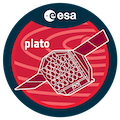Speaker
Description
The radius distribution of Earth- to Neptune-size exoplanets contains two dominant peaks assigned to populations of predominantly rocky and volatile-rich objects, respectively, separated by a valley at 1.7 Earth-radii. Understanding the exact composition, formation, and evolution of such objects is a major challenge in current exoplanet research. Previous work has compared radius distributions with younger vs. older solar-type host stars and found change consistent with the predicted loss of volatile envelopes from sub-Neptunes", leaving rocky cores assuper-Earths" over hundreds of Myr or Gyr. We performed a similar analysis with a refined sample of single Kepler M dwarf planet hosts with ages assigned using a new gyrochronology. M dwarfs provide an opportunity to study the phenomenon's dependence on stellar mass and irradiance. We find the same peaks in the radius distribution, and a significant decline in the sub-Neptune population between the <3.8 Gyr and >3.8 Gyr halves of the sample. Unexpectedly, we also find that the location of the radius valley does not depend on irradiance and that sub-Neptunes persist on closer rather than more distant orbits, suggesting a mechanism that keeps these planets inflated at elevated irradiance, e.g. a runaway water greenhouse. The robustness of these results is limited by the small Kepler sample size, and we show how PLATO will be able to deliver more M dwarf planets on more distant orbits and with rotation-based ages to clarify this intriguing discovery.

